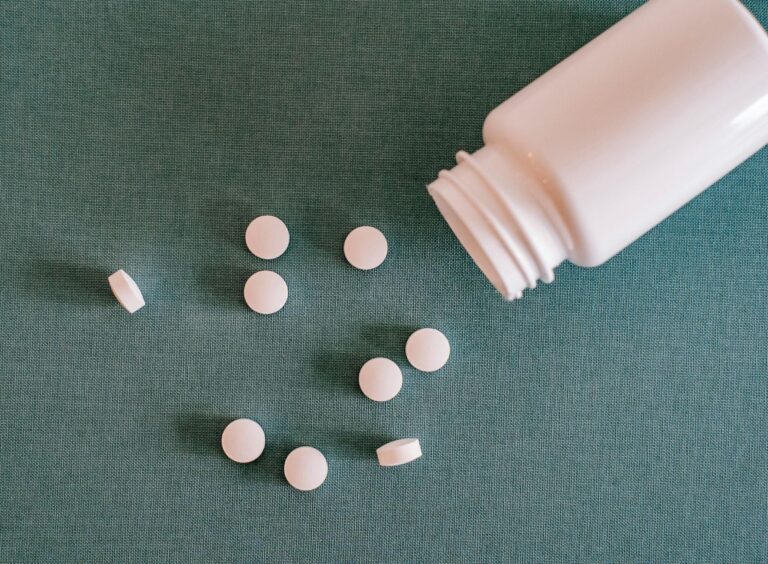Cocaine’s impact on the nasal passages is both profound and alarming, primarily due to its potent vasoconstrictive properties, which can severely compromise blood flow. This reduction in circulation often leads to a cascade of detrimental effects, manifesting initially as nasal irritation and congestion. However, the real concern lies in the potential for more severe consequences such as septal perforation and structural deformities. Understanding the full extent of the damage and the critical importance of timely intervention is essential for anyone exploring this issue. What follows is an examination of these effects and the available pathways for recovery.
Physical Effects on Nasal Tissue
Chronic use of cocaine can lead to significant damage to nasal tissue due to its vasoconstrictive properties, which cause reduced blood flow to the area. This reduction in blood flow is crucial in understanding the pathophysiological effects on nasal anatomy. The nasal septum, composed of cartilage and mucous membrane, is particularly vulnerable. As cocaine is absorbed through the nasal mucosa, its vasoconstrictive action compromises the blood supply, leading to ischemia and tissue necrosis. Evidence highlights the correlation between the frequency of cocaine use and the degree of nasal damage, with compromised vasculature resulting in ulcerations, perforations, and even collapse.
The absorption of cocaine through the nasal mucosa is a rapid process, which exacerbates the damage due to repeated exposure and contact with the drug. Furthermore, cocaine’s ability to inhibit local blood flow impairs the natural healing process of the nasal tissue. This can lead to chronic inflammation, infection, and progressive degradation of the nasal architecture. Understanding these effects is crucial for healthcare professionals in diagnosing and managing cocaine-induced nasal damage, emphasizing the importance of early intervention and treatment. For individuals considering recovery services, options such as residential inpatient treatment might be beneficial.
Long-Term Damage to the Nose
Over prolonged periods, the deleterious effects of cocaine on nasal structures can culminate in severe and often irreversible damage. Chronic cocaine insufflation can result in persistent nasal congestion as the nasal mucosa becomes increasingly edematous and irritated. The vasoconstrictive properties of cocaine exacerbate this condition by reducing blood supply, leading to ischemic necrosis of nasal tissues. Consequently, this can progress to septal perforation, characterized by a hole in the nasal septum due to the loss of cartilage, integral to the nose’s structural integrity. Moreover, repeated exposure to cocaine can induce chronic sinus inflammation, with sinus linings irritation obstructing normal drainage, increasing susceptibility to infections.
Long-term use disrupts ciliary function within the nasal passages, impairing the clearance of mucus and debris, exacerbating nasal congestion and sinusitis, creating a cycle of inflammation and blockage. These structural and functional alterations highlight the profound impact of cocaine on nasal anatomy, underscoring the urgent need for medical intervention to prevent irreversible damage.
Symptoms of Nasal Damage
The extensive damage cocaine inflicts on nasal structures manifests through a range of symptoms that signal the onset of nasal complications. Initial symptoms often include nasal irritation characterized by a burning sensation and persistent runny nose. Chronic cocaine use exacerbates these symptoms, leading to more severe complications such as congestion and recurrent nosebleeds. As damage progresses, individuals may experience crusting and ulceration within the nasal cavity. Additionally, structural damage is not uncommon, as cocaine compromises the nasal septum’s integrity, potentially resulting in septal perforation. This condition can further lead to nasal deformity and functional impairments, including difficulty breathing.
Early recognition and intervention are critical to mitigating further nasal damage. Cocaine users should remain vigilant to these symptoms, as they may indicate the onset of more serious nasal complications requiring medical attention.
Treatment and Recovery Options
A myriad of treatment and recovery options are available for individuals grappling with cocaine-induced nasal damage, emphasizing both medical intervention and behavioral support. The nasal septum, often severely compromised by chronic cocaine use, may necessitate surgical intervention such as septoplasty or more complex procedures to restore integrity and function. Concurrently, medications like topical decongestants and antibiotics manage inflammation and prevent infections. Behavioral support is paramount in addressing the underlying addiction, with evidence-based therapies like cognitive-behavioral therapy (CBT) demonstrating efficacy in modifying behaviors and reducing relapse rates. Participation in support groups, like Narcotics Anonymous, offers a communal framework for shared experiences. For those looking for medical intervention, detoxification services can be an essential first step.
Access to comprehensive recovery resources, including outpatient rehabilitation programs, provides individuals with treatment plans that integrate medical care and psychological support. These programs often emphasize holistic approaches, incorporating nutritional counseling and stress management techniques to promote overall well-being.

Final Thoughts
Cocaine use induces significant vasoconstriction, resulting in reduced blood flow and subsequent ischemia of nasal tissues. This vascular compromise leads to nasal irritation, congestion, and epistaxis. Chronic exposure can cause ulcerations and septal perforations, leading to structural deformities and impaired respiration. Persistent inflammation and potential infections necessitate medical intervention. Early identification and cessation of cocaine use, coupled with appropriate medical treatment, are crucial to mitigate irreversible damage and restore nasal function, underscoring the importance of comprehensive clinical management.
At Altitude Recovery, we’re here to elevate you from the challenges of substance use to a place of lasting resilience and renewal. Our dedicated team crafts personalized, evidence-based treatment plans, guiding you on a journey uniquely tailored to your needs and goals. Reach out for the compassionate support you deserve on your path to wellness by contacting us. Follow us on Facebook for more insights, resources, and stories of hope as we walk alongside you towards recovery.
Frequently Asked Questions
Can Cocaine Use Affect My Sense of Smell?
Cocaine addiction can severely impact nasal health, including the potential to affect one’s sense of smell. Repeated intranasal cocaine use can damage the nasal mucosa, leading to chronic inflammation and tissue necrosis. This can result in a diminished olfactory sense due to impaired signal transmission from smell receptors. The extent of olfactory dysfunction often correlates with the duration and intensity of cocaine use, highlighting the importance of seeking professional medical intervention.
How Quickly Can Cocaine Damage Occur in the Nose?
Cocaine absorption through nasal mucosa is rapid, leading to immediate vasoconstriction. This constriction reduces blood flow, causing tissue damage and nasal inflammation. The damage can manifest quickly, sometimes within a few uses, due to repeated vasoconstriction and subsequent tissue ischemia. Chronic exposure exacerbates these effects, potentially leading to nasal septum perforation. Evidence suggests that even short-term cocaine use can result in significant nasal structural damage, necessitating prompt intervention for substance abuse. For further understanding and evidence, refer to studies like the one regarding urine drug monitoring in treatment interventions.
Are There Any Non-Physical Symptoms of Nasal Damage From Cocaine Use?
The non-physical symptoms of nasal damage from cocaine use encompass psychological effects and emotional impact. Chronic use can lead to anxiety, depression, and heightened irritability, which may be attributed to neurochemical alterations in the brain. Furthermore, individuals may experience heightened stress or emotional instability due to social or occupational impairments. Evidence-based research indicates that these emotional and psychological consequences can exacerbate the overall deterioration of mental health, necessitating comprehensive intervention strategies.
Can Using Cocaine in Other Forms Still Harm My Nose?
Cocaine absorption through alternative routes can indirectly affect nasal health due to systemic circulation of the drug, potentially leading to nasal irritation. When cocaine is introduced into the body, regardless of the method, vasoconstriction occurs, reducing blood flow to tissues, including nasal passages. Chronic use exacerbates this effect, causing mucosal dryness and potential atrophy. Evidence-based studies indicate that even without direct nasal insufflation, indirect consequences may arise, warranting caution and professional consultation.
Is Nasal Damage From Cocaine Reversible Without Medical Treatment?
Nasal recovery from cocaine-induced damage often requires medical intervention, as spontaneous healing is limited. Treatment options include cessation of cocaine use, which is essential for preventing further harm. Medical professionals may recommend decongestants, saline rinses, and topical ointments to promote healing. In severe cases, surgical intervention might be necessary to repair structural damage. Evidence-based studies highlight that early medical treatment significantly enhances recovery prospects and reduces the risk of long-term complications.




